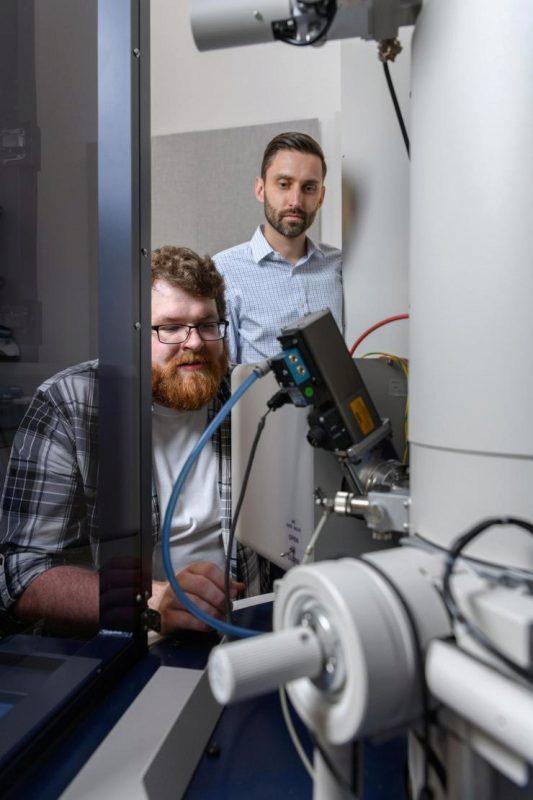
Solar panels cannot absorb light when it is cloudy or dark. Wind turbines cannot generate electricity on a still day. But energy users need electricity whenever they flip a switch. That is why there is a need for high capacity batteries to store and provide that energy – which is where Matthew Boebinger comes in. His research is focused on analysis of how different materials react with one another and store large amounts of energy to be used later.
Boebinger, a Ph.D. candidate in the School of Materials Science and Engineering, was one of 47 students across the country to be honored with the Graduate Student Research Award. Supported by the Department of Energy’s Office of Science, the award will allow Boebinger to carry out his doctoral research in one of their 14 national laboratories.
Boebinger’s proposal, titled “In Situ Examination of Nanoscale Reaction Pathways in Alloying Battery Materials,” was the only student submission from Georgia Tech chosen during this proposal solicitation cycle, which occurs twice a year.
Boebinger will be hosted at the Oak Ridge National Laboratory, where he will work on fundamental, nanoscale materials research into the miniscule reactions that happen within batteries. Batteries are composed of two electrodes called anodes and cathodes, with lithium ions that flow in between and produce energy that we can use gadgets and devices. He’s investigating different materials for use in anodes that store the maximum amount of energy possible.
But there is a problem: modern anodes can only store a fixed amount of lithium, meaning the energy they can hold is also limited. To store more, the material of the anodes must react with lithium instead of simply holding it. Boebinger will be studying this reaction on a miniscule scale, looking at particles and even atoms as they interact with one another. Storing more energy has big implications for renewable energy networks and power grids.
“The wind’s not always going to be blowing, and the sun isn’t always going to be shining,” said Boebinger. “You can store that energy in some kind of slow release battery system.”
Careful investigation of these reactions is essential. If the reaction results in too much volume change, it could break the battery itself. Boebinger also looks at materials that might be used in batteries like sodium and potassium, which are much cheaper than lithium because they can be found in a very common substance: seawater.
His work in this field arose out of a general interest in both materials science and renewable energy. His interest was really piqued a few years ago, when he realized that climate change was a looming and important issue. Boebinger became convinced that renewable energy was one way to confront the problem and decided to do it the best way he knew how: with materials.
Boebinger’s stay at Oak Ridge National Lab will span six months, and it will help him finish his thesis. This DOE lab has extremely sensitive microscopes and other equipment that will allow him to observe reactions on an atomic level.
“I’ve been up there a couple times now, and they have a lot of fun toys,” he said.
Boebinger hopes that his foundational work will someday be applied to help turn on the lights without the use of fossil fuels, knowing that his batteries made that happen.
